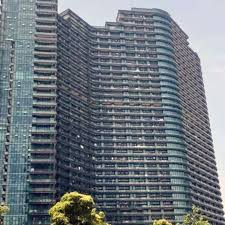A recent video showcasing Regent International, the world’s largest residential building located in China, has taken the internet by storm. With its impressive 675-foot-tall, S-shaped structure, this mammoth building is not only an architectural marvel but also a self-contained mini-city. The viral video has drawn global attention, making people marvel at the sheer scale and ingenuity behind the design. But, while the video leaves many in awe, others question: What does living in such a colossal structure mean for its residents?
Conceived initially as a high-end hotel, Regent International now houses 20,000 people and has the capacity to accommodate 30,000 residents. It spans an astounding 14.7 lakh square meters, offering much more than just apartments. The building is a hub of daily life, containing shopping centers, restaurants, schools, hospitals, and recreational facilities—all under one roof. This design not only provides convenience but also makes it possible for residents to live their entire lives within the confines of the building. But how does this impact community life and individual well-being?
An Engineering Marvel: How Regent International Was Built
The S-shaped design of Regent International is not just for aesthetic appeal—it serves functional purposes as well. The curve of the building allows for optimal wind resistance, making it more stable during extreme weather conditions. Additionally, this shape helps maximize the use of natural light, ensuring that even the most interior spaces receive adequate sunlight.
With the capacity to house 30,000 people, the building is essentially a self-contained city. It’s equipped with everything from schools to hospitals, meaning residents rarely need to leave the building for their everyday needs. This level of convenience, however, also raises questions about the effects of living in such a contained environment.

A City Within a Building: Convenience or Claustrophobia?
For many, the idea of living in a building that provides everything you need sounds like a dream come true. No more long commutes, waiting in traffic, or searching for essential services. Schools, hospitals, restaurants, and shopping centers are all just an elevator ride away. But what might seem like the ultimate in convenience can also raise concerns about the effects of such a self-contained lifestyle.
Critics argue that living in such a massive structure could lead to a sense of isolation. With everything available within the building, there is little need to engage with the world outside. Over time, this could contribute to a disconnection from the broader community. Others worry about the potential for overcrowding and the psychological impact of living in such densely populated conditions.
On the flip side, proponents argue that such buildings represent the future of urban living, especially in overpopulated cities. In places like China, where space is at a premium, buildings like Regent International could provide a sustainable solution to housing shortages while ensuring that residents have access to all necessary amenities.
The Future of Urban Living?
While the concept of Regent International is certainly futuristic, it may also represent a broader shift in urban planning. With cities becoming more congested, mega-buildings like this could become a more common sight. In fact, such structures could offer a sustainable and efficient way to manage population growth, especially in countries like China, where urban density is a major concern.
However, there are also environmental questions to consider. Massive buildings require significant energy to operate, and ensuring they remain energy-efficient could be a challenge. While Regent International has integrated modern building technologies, ensuring that such structures are sustainable in the long term will be essential as more cities look to adopt this model.

Social Media Reactions: Awe and Skepticism
The viral video has generated a mix of awe and skepticism among viewers worldwide. Social media is flooded with comments ranging from amazement at the building’s sheer size to concerns about the quality of life inside.
Some users joked, “You wouldn’t need to step outside ever again! This is both cool and slightly terrifying,” while others expressed skepticism: “Living in a building with 20,000 people sounds like a claustrophobic nightmare.”
Many are also questioning the logistics of living in such a massive space. How do you ensure security? How do you maintain community engagement when your neighbors number in the thousands? These are valid concerns, especially in an era where mental health and well-being are becoming more of a focus in urban design.
The Challenges of Mega-Structures
While Regent International is an engineering marvel, it also brings unique challenges. Maintaining such a vast building requires advanced infrastructure and regular maintenance. The risk of issues like power outages, plumbing problems, or fire hazards is amplified in a building of this size, making it crucial for the management to have robust systems in place.
There’s also the issue of social cohesion. In smaller apartment complexes, residents often form close-knit communities. But can the same be said for a building that houses 20,000 people? Creating a sense of community in such a vast space could prove difficult, leaving residents feeling more isolated than they would in a traditional neighborhood setting.
A Glimpse into the Future or a Step Too Far?
The Regent International building is undoubtedly a testament to human ingenuity and engineering. It offers a unique glimpse into what the future of urban living could look like, especially in overpopulated cities. However, it also raises important questions about the social and psychological impacts of living in such massive, self-contained environments.
As the world watches China’s experiment with mega-structures like Regent International, one thing is clear: the future of urban living is changing, and buildings like this could play a major role in shaping the cities of tomorrow.

